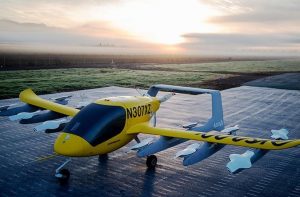The US Air Force is determined to learn from past mistakes, particularly those made during the development of the F-35, as it embarks on the creation of a sixth-generation fighter known as Next Generation Air Dominance (NGAD), according to Air Force Secretary Frank Kendall.
Kendall emphasized the importance of ensuring the Air Force has full access to sustainment data from the contractor responsible for building the NGAD platform. He cited the F-35 program’s failure to secure rights to all the fighter’s sustainment data from Lockheed Martin as a serious mistake that should not be repeated.
The acquisition philosophy known as Total System Performance, which granted contractors ownership of programs for their entire lifecycle, contributed to what Kendall called a perpetual monopoly. He expressed his determination to avoid such a situation with NGAD, citing the ongoing struggles with the F-35.
Excessive concurrency, the simultaneous development and procurement of an aircraft, was another major issue that hindered the F-35 program. While some concurrency is expected with NGAD and the B-21 Raider stealth bomber, Kendall assured that it would be managed in a rational manner to minimize excessive risk.
Kendall emphasized the need for the government to have greater control over NGAD compared to the F-35. This includes ensuring access to intellectual property and implementing modular open system design to facilitate system upgrades by involving new suppliers.
The Air Force’s program executive officer for fighters and advanced aircraft, Brig. Gen. Dale White, will be responsible for overseeing the NGAD program.
Given the anticipated high cost of NGAD, the Air Force plans to work with a single contractor for the program. Boeing, Lockheed Martin, and Northrop Grumman are expected to compete for the opportunity.
Kendall also mentioned the progress of the collaborative combat aircraft (CCA) acquisition strategy, which aligns with NGAD. The Air Force is exploring the development of autonomous drone wingmen in conjunction with CCA and is engaging with multiple potential suppliers.
NGAD’s origins trace back to the Obama administration when Kendall, in his previous role, requested the Defense Advanced Research Projects Agency (DARPA) to study the Air Force’s future requirements for air dominance. DARPA’s response emphasized the need for a family of systems, including weapons, space assets, and potentially autonomous drone wingmen.
Under Kendall’s Aerospace Innovation Initiative, prototype aircraft known as X-planes were developed to test and validate core technologies for the sixth-generation fighter.
Advancements in model-based systems engineering and digitalization have facilitated efficient collaboration between government and contractor design teams working on NGAD at Wright-Patterson Air Force Base. Government designers have direct access to the databases used by bidding companies, enabling closer cooperation and streamlined development.






